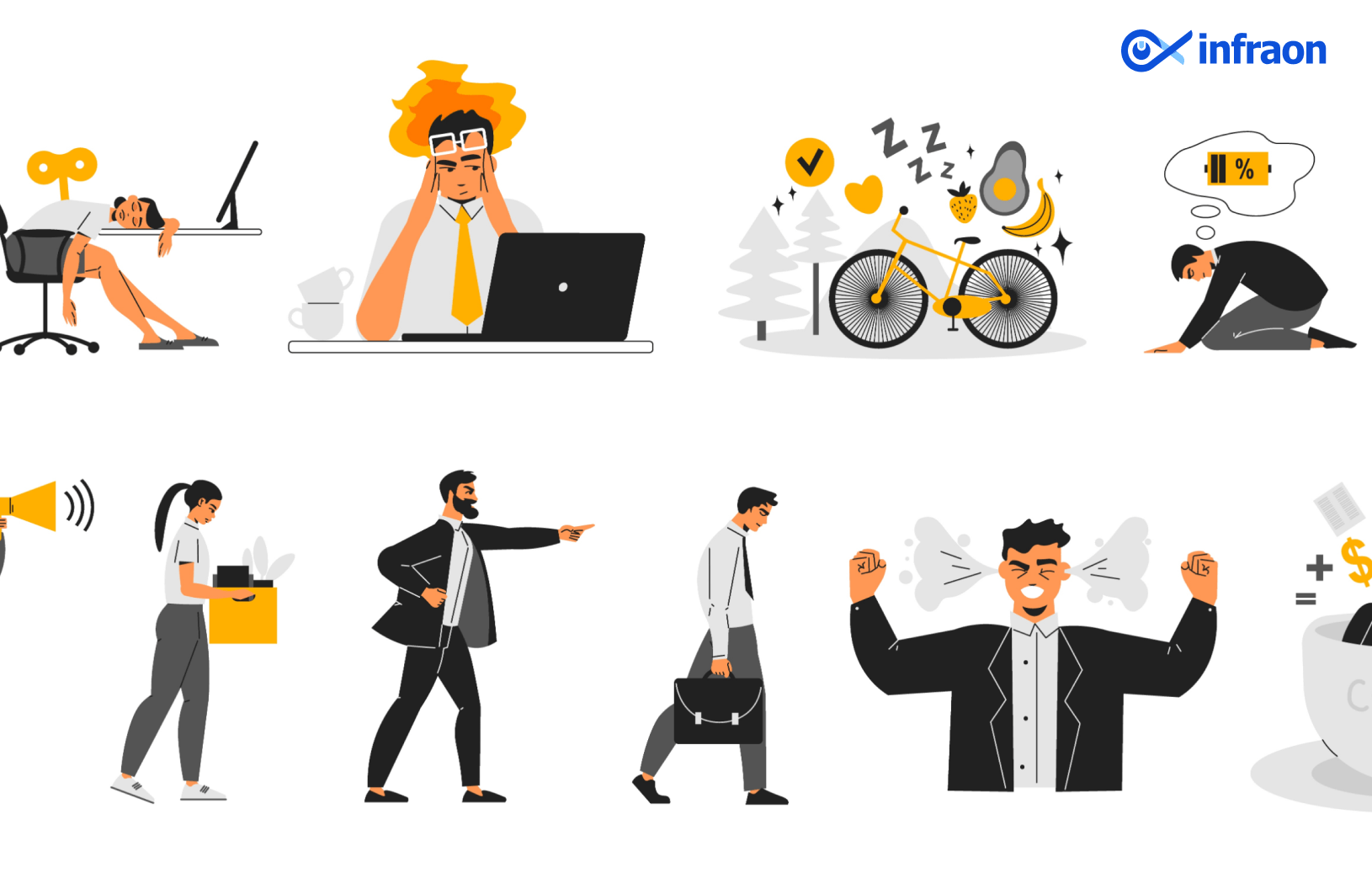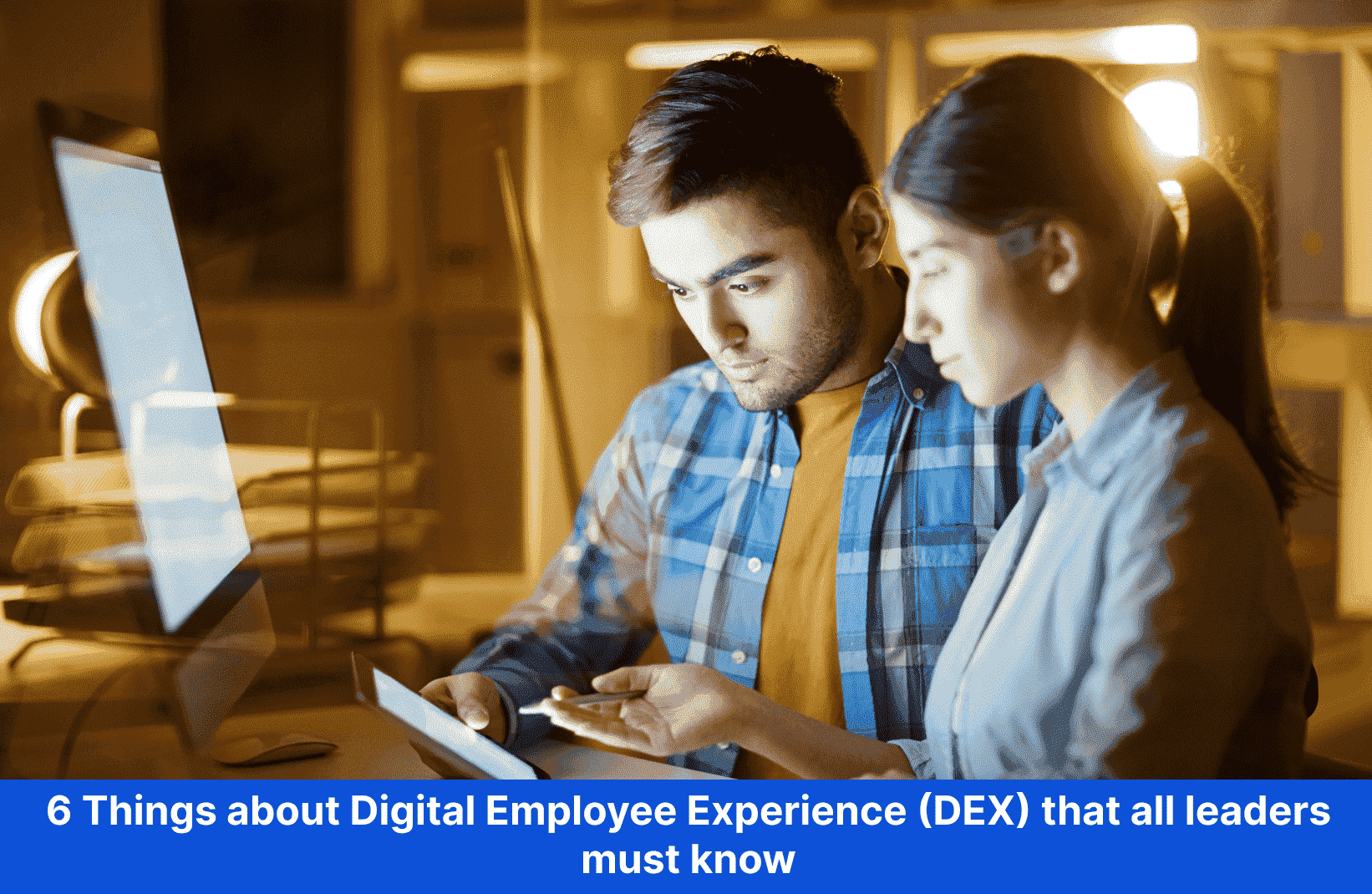Digital Employee Experience (DEX) is the collection of digital tools, technologies, and services you provide to employees to facilitate daily work. Incorporating the right DEX approach is unquestionable, as it directly impacts employee satisfaction, engagement, and productivity. Empowering your teams with positive digital experiences can enhance their morale and reduce turnover while improving their job performance. It also triggers a positive domino effect through which you can effectively attract and retain top talent with modernized experiences.
Therefore, the goal of DEX is not just to streamline processes and reduce workload. Ultimately, the end goal is to improve the lives of your employees – making it easier for them to complete tasks, collaborate with other teams, and contribute more strategically to your company’s bottom line.
Well, now, here comes the complex part.
As a leader in your organization, where exactly do you begin to establish the right DEX approach? In order to do that, you must first know the key modules of DEX.
Six key modules of Digital Employee Experience (DEX)
1) Employee Persona Insights
Employee persona insights refer to a detailed understanding of the different characteristics, behaviors, motivations, and preferences of the employees working in an organization. It involves assessing the technical and sentiment IT-related data about user needs, values, and behaviors, such as device preferences, software usage, work timings, and data security.
Once the information is analyzed, the insights can be used to personalize employee experiences – aligning the right technology to the right user. It can also streamline cross-team collaboration, enable remote IT security, and eliminate digital disruptions – ultimately helping build a scalable digital workplace.
| “85% of employees are likely to stay beyond three years in their jobs if they feel they have the technology that supports them at work.” |
2) Proactive IT Service Management (ITSM)
Proactive IT Service Management (ITSM) is an approach to managing IT operations and services that focus on preventing problems before they occur rather than simply reacting to them after they happen. It involves using various digital technologies like analytics and automation to identify potential issues and risks before addressing them proactively.
It ensures that your employees can access IT services whenever needed – helping reduce downtime while boosting operational efficiency. As a result, your employee productivity and satisfaction levels go up – given that their digital experiences come hassle-free.
3) Digital Experience Observability (DXO)
Digital Experience Observability is an approach to monitoring and managing digital experiences that focuses on understanding and optimizing the experience of users interacting digitally (business applications, mobile applications, web applications, etc.). DXO typically involves three key components:
- Monitoring: Tracking and measuring various performance metrics, such as page load times, server response times, network performance, system/application error rates, etc.
- Analytics: Analyzing user behavior data, such as clickstream data, session replays, and heat maps
- Insights: Identifying opportunities for improvement and making informed decisions about how to optimize digital experiences
Enabling DXO can be a game-changer for tracking the success of DEX initiatives. For instance, if your teams are adopting new tools, you can monitor their interactions with these tools to evaluate just how effective they are.
4) Workflow Automation & Remediation
As you may know, workflow automation eliminates repetitive or time-consuming tasks to improve employee efficiency. It ensures that tasks are completed promptly and consistently – with reduced errors – thereby improving overall productivity. Workflow remediation involves identifying and resolving issues or problems that arise during critical workflows. It can also involve tracking and analyzing data to identify trends and patterns – preventing future issues in the process.
Benefits of workflow automation and remediation:
- Reduced manual labor and effort across the organization
- Minimized total costs
- Improved digital working experience
- Increased employee job satisfaction
| “According to a recent Gartner poll, more than 80% of companies plan to keep or grow their investment in automation solutions.” |

5) Employee Sentiment Analysis
In relation to DEX, employee sentiment analysis involves analyzing and measuring employees’ attitudes, emotions, and opinions toward the digital workplace. Using NLP and ML algorithms, employee feedback is analyzed so that actionable insights about their sentiments can be extracted and harnessed to improve their digital experiences. For example, if sentiment analysis reveals that your IT employees are unhappy with the chat engine, then you can take steps to address this issue.
Employee sentiment analysis looks to give you a better understanding of the needs and perspectives of your teams.
| “Organizations with engaged employees experience 41% less absenteeism and a 17% increase in productivity.” |
6) Collaboration Experience
Collaboration experience in the context of the digital workplace refers to how easily and quickly employees can work with others using digital tools and technologies to achieve common goals. It can be achieved by implementing digital-first workflows that support effective communication, document sharing, and project management across dispersed teams.
For example, do your teams have access to collaboration apps like Microsoft Teams, Slack, etc., to communicate effortlessly? Is there a chatbot engine to give clarity on FAQs? Is there desktop and video conferencing for faster troubleshooting? These are just a few of the answers that you must already have in place to foster better teamwork and higher productivity.
Related Read: Ultimate DEX Guide
So, what does the future hold for DEX?
For starters, DEX will continue to evolve as new technologies emerge, such as advanced conversational/search bots, Virtual and Augmented Reality, blockchain, and 5G. These technologies could create new and innovative DEX platforms that enhance employee engagement and productivity. Another expected trend would be a greater emphasis on remote working, whether the world sees another pandemic or not. It may lead to more DEX platforms prioritizing collaboration and communication tools to help remote teams stay connected. Furthermore, deeper DEX personalization would become possible– as more sophisticated AI and automation workflows get integrated into DEX processes.
Overall, the future of DEX will likely be shaped by an ongoing commitment to providing employees with a seamless digital work experience that supports and increases their productivity, performance, and engagement levels.























